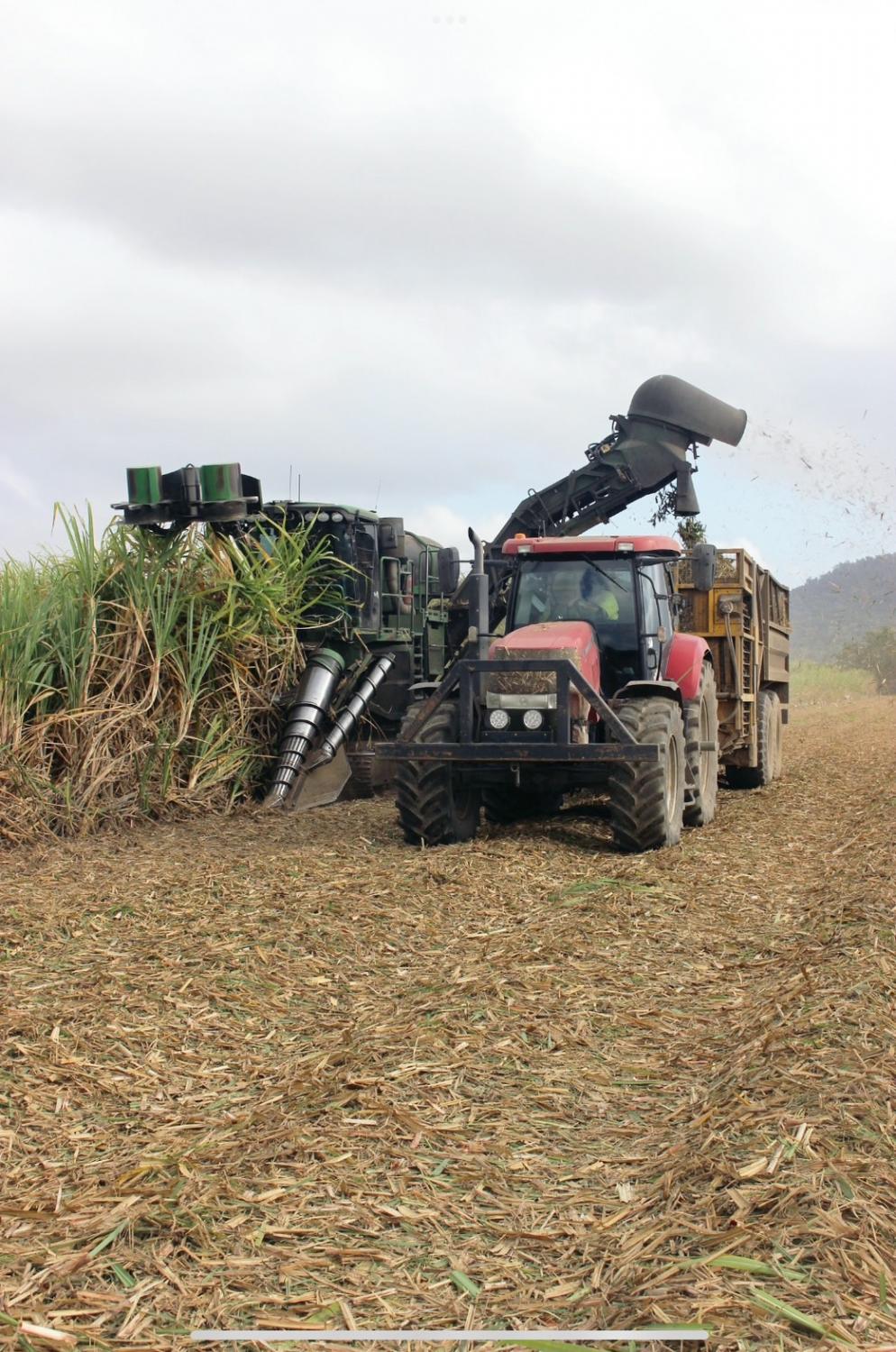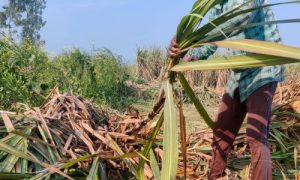Banks help sugar farmers combat PM2.5

Thailand’s sugar industry is turning greener with the “Financing the Transition” programme, offering low-interest loans for purchasing cane harvesters to curb sugarcane burning and PM2.5 pollution. Backed by KTB, SCB, and the central bank, the initiative supports sustainable farming and addresses labor shortages. Early results show rising fresh cane harvests and growing industry interest in eco-friendly practices.
The amount of PM2.5 air pollution has increased in Thailand in recent years, driven by multiple factors such as industrial manufacturing, the widespread use of internal combustion engine-powered vehicles, and the open burning of garbage and agricultural crop residue.
In the agricultural sector, the sugar industry contributes a significant amount of PM2.5 emissions due to the widespread practice of burning sugarcane before harvesting. In response, the Bank of Thailand initiated its “Financing the Transition” programme.
Financial sweetener
The central bank, in collaboration with the Office of the Cane and Sugar Board (OCSB), Krungthai Bank (KTB), and Siam Commercial Bank (SCB), launched a pilot loan programme to reduce PM2.5 pollution in the sugar industry.
The regulator said the loan initiative aligns with government policies aimed at limiting air pollution and promoting environmentally sustainable industrial practices.
The government has encouraged fresh sugarcane harvesting as an alternative to burning for some time.
However, a lack of cane harvesters is cited by farmers for their continued burning. Financial support from the banking sector is expected to nudge the industry towards a more environmentally sustainable model.
Under the programme, KTB and SCB developed tailored loan products to support sugar businesses.
The transition loans finance the purchase of efficient agricultural machinery, such as cane harvesters and leaf compactors, that will reduce the level of PM2.5 pollution.
The loans offer favourable interest rates and extended repayment periods of up to seven years, with principal payments required only once a year to align with the seasonal income cycle of sugarcane harvests.
To qualify, participants must demonstrate a reduction in the proportion of burnt cane purchased compared with the previous year, ensuring this proportion falls below the national or regional average. Participants must also meet additional conditions set by banks.
The programme is being monitored and assessed using concrete performance indicators, according to the central bank.
Sustainable Lending
Roong Mallikamas, deputy governor for financial institution stability at the central bank, said the regulator implemented a sustainable finance strategy aimed at encouraging financial institutions to take a more active role in supporting businesses as they transition towards environmental sustainability.
As part of this initiative, KTB and SCB initially committed to jointly providing loans to the sugarcane and sugar industry, with a total credit line of more than 4 billion baht.
As of February this year, the duo had extended loans worth 1.51 billion baht.
“Although only two banks are participating in the pilot programme, many other financial institutions have begun offering sustainability-linked financing to businesses in various sectors, aligning with Thailand’s broader transition to a sustainable financial and economic system,” said Mrs Roong.
The pilot project may expand to include other interested banks in the future, she said.
The scheme also seeks to promote greater collaboration between public agencies and the financial sector to support Thailand’s transition to sustainability, said Mrs Roong.
Yunyong Thaicharoen, senior executive vice-president at SCB, said the bank recorded strong interest from entrepreneurs in the PM2.5 reduction loan scheme, reflecting growing awareness and environmental responsibility.
SCB, the country’s fourth-largest lender by total assets, offers preferential interest rates to operators purchasing cane harvesters. These operators then provide harvesting services to farmers.
A loan condition is operators must purchase fresh sugarcane at a proportion higher than the industry average, said Mr Yunyong.
“The average proportion of fresh sugarcane purchases has continued to rise, and currently hovers around 70-80%, reflecting a decrease in sugarcane burning,” he said.
“The bank’s business customers have consistently increased their share of fresh sugarcane purchases.”
MAKING A LIST
SCB plans to introduce more sustainable finance products to align with the central bank’s Thailand Taxonomy Phase 2. The bank is reviewing five high-impact sectors — electricity, petrochemicals, hospitality, automotive and fossil fuels — as part of its decarbonisation roadmap.
The taxonomy initiative is based on a classification system designed to identify and categorise economic activities based on their environmental sustainability.
The project serves as a reference tool to guide investments, financial decisions and policy measures as Thailand seeks to achieve its climate goals, particularly reducing greenhouse gas emissions and aligning with the Paris Agreement and the UN’s Sustainable Development Goals.
The central bank completed the public hearing for Phase 2 and the Taxonomy Working Group is reviewing feedback and refining the framework, which is expected to be finalised and published by the end of May.
The regulator expects to implement Phase 2 in the second half of the year.
Mr Yunyong said hospitality is a key sector for SCB, and the bank has provided sustainability-linked financial facilities across the industry’s supply chain.
This financial support aligns with the tourism sector’s crucial role in contributing to the country’s economic growth, he said.
Funding the Transition
KSL Group, a leader in Thailand’s sugar industry, joined the Financing the Transition programme through its subsidiary New Krungthai Sugar Co.
Piriyapol Chinthammamit, deputy managing director of KSL, said in a magazine published by the central bank that New Krungthai signed a loan agreement with KTB for funding to acquire cane harvesters.
The company bought 10 additional cane harvesters, enabling it to harvest more fresh sugarcane, reducing sugarcane burning by up to 100,000 tonnes a year, equivalent to about 10,000 rai of farmland.
In addition to addressing PM2.5, the loan can help the company tackle the labour shortage plaguing the sugar industry, he said.
“With the new equipment, our fleet has grown to 50 harvesters, which are used both for our operations and to provide harvesting services to member farmers,” said Mr Piriyapol.
“Across the country, there are now several thousand sugarcane harvesters in use.”
As the amount of sugarcane burning eases, the level of emissions is also decreasing.
He said this type of investment not only addresses the PM2.5 problem, but also raises production efficiency, enhances the company’s image, and builds confidence among its domestic and international business partners.
Mr Piriyapol said financial backing from banks plays a pivotal role in the industry’s shift towards sustainability, particularly through the adoption of advanced machinery and automation technologies.
The widespread adoption of cane harvesters eases the struggle with labour shortages and increases the volume of fresh, sustainably harvested sugarcane delivered to mills, he said.
However, the high cost of harvesting equipment remains a major hurdle.
Imported machines typically cost between 10-12 million baht, while locally produced ones cost 5-8 million baht.
Operators must have improved access to financing to scale up the use of harvesters and phase out manual labour and burning practices, said Mr Piriyapol.
To Read more about Sugar Industry continue reading Agriinsite.com
Source : Bangkok Post
















